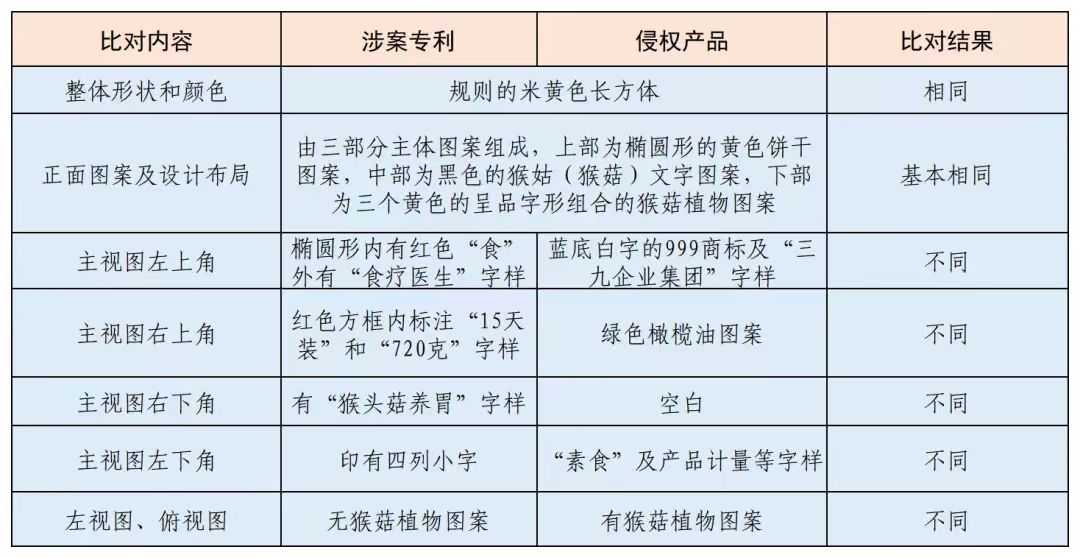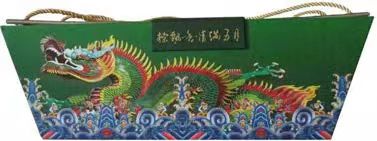Case Study: Intellectual Property Protection for Packaging Boxes
In the process of product display and sales, product packaging often creates the first impression in the eyes of consumers, and some unique packaging designs can even help a product stand out in its category. How to protect product packaging through intellectual property is an important yet often overlooked issue for businesses. This article intends to use the most common packaging boxes as a starting point and analyze different types of intellectual property protection through judicial cases.
The three most commonly discussed types of intellectual property—patents, trademarks, and copyrights—can all provide protection for packaging boxes.
For this article, let’s look at patent rights. In addition to protecting inventions or utility models at the technical level, such as in shape, structure, and manufacturing processes, design patents can protect the visual aspects of packaging boxes. By using a well-known patent database and searching only with the keyword “packaging box” in the product name field, you can obtain results for over 290,000 Chinese design patents, with more than 70,000 of them in valid status. This demonstrates that design patents are an important means of protection for packaging boxes.
Case One: Lion’s Mane Mushroom Biscuit Case
In August 12, 2013, Jiangxi Jiangzhong Group applied for a design patent with the name ‘Packaging Box (Lion’s Mane Mushroom Biscuits, 15-day pack)’ and obtained authorization on January 8, 2014. Jiangzhong Group entered into a patent implementation licensing agreement with Jiangzhong Food Therapy Company, granting exclusive rights for implementation and use.
Jiangzhong Food Therapy Company filed a lawsuit against four defendants, including Sanjiu Liquor Group and Sanjiu Liquor Protein Branch, for producing and selling infringing products that violated the design patent rights. The Intermediate People’s Court of Nanchang City made a first-instance judgment, recognizing the infringement, and ordered Sanjiu Liquor Protein Branch and Sanjiu Liquor Group to jointly compensate Jiangzhong Food Therapy Company with 800,000 yuan. The second-instance upheld the original judgment. Sanjiu Liquor Protein Branch filed for a retrial, and the retrial application was rejected in (2016) Supreme Court Civil Decision No. 2540. This case went through the first-instance, second-instance, and retrial procedures, with the plaintiff Jiangzhong Food Therapy Company successfully protecting their rights in the first instance.



Figure 1 shows the main view and isometric view of the Lion’s Mane mushroom biscuit packaging box in the relevant patent CN 302708698S. Figure 2 is a photo obtained by the author through online searches, believed to be the allegedly infringing product described in the court judgment.
Upon comparing the two, it is evident that:

The view of the retrial court was as follows:
The overall shape and color of the biscuit box in the allegedly infringing product were found to be identical to the patented design. Additionally, the front-facing pattern and its design layout were essentially the same. These elements constitute the main visual aspects of the product, which are more likely to be noticed by ordinary consumers and have a more significant impact on the overall visual effect. On the other hand, the patterns or text on the four corners of the product, relative to the entire front surface, occupy a smaller area or proportion and do not significantly affect the product’s appearance. The left view and top view of the allegedly infringing product only added the same Lion’s Mane mushroom plant pattern as the front view, and generally, the design of the left view and top view is of secondary importance compared to the main view, thus not significantly affecting the overall visual effect.
Therefore, the allegedly infringing product in this case was determined to have no substantial differences in its overall visual effect compared to the patented design, falling within the scope of protection of the patent.
In addition to the determination of whether there was an infringement of the design patent in question, there are several points worth noting in this case:
Mr. Qiao filed a lawsuit against Jinbo Company and Jiulong Company for infringing his design patent rights for ‘Packaging Box (Boat-shaped Zongzi).’ As shown in Figure Three, the packaging box in question has a boat-shaped exterior, with a green background and a design featuring a flying dragon and auspicious clouds. When both box covers are lifted, it resembles a sailing ship.


In Case Two: Dragon Boat Zongzi Case, Mr. Qiao sued Jinbo Company and Jiulong Company for infringing his design patent rights for the ‘Packaging Box (Boat-shaped Zongzi).’ As shown in Figure 3, the packaging box in question has a boat-shaped exterior, with a green background and a design featuring a flying dragon and auspicious clouds. When both box covers are lifted, it resembles a sailing ship.
The first-instance court found that the allegedly infringing design was used for the packaging box of Zongzi, identical to the patented design. The allegedly infringing design had a boat shape, a design of a flying dragon and auspicious clouds, and in the open state, it resembled a sailing ship with the only difference being that the allegedly infringing design was yellow, while the patented design was green. However, when considering the overall visual effect, the two had no substantial differences and thus constituted similarity.
It is worth noting that the brief description of the design in question highlighted the design elements of shape, color, and pattern. However, the first-instance judgment did not provide sufficient reasoning regarding the most obvious difference, which was the color. It simply stated that there was no substantial difference in the overall visual effect.
According to Article 64 of the Patent Law, the brief description serves to explain the design shown in the images or photographs. However, the definition of an ‘appearance design’ in Article 2 of the Patent Law states that an appearance design refers to a new design that is aesthetically pleasing and suitable for industrial application concerning the overall or partial shape, pattern, or their combination, as well as the combination of color and shape or pattern. Color elements alone cannot constitute an appearance design and are only protectable in combination with shape or pattern. Therefore, when the brief description proposes protecting color, it effectively narrows down the scope of protection for the appearance design.
Based on this understanding, in invalidation proceedings, a design patent that limits protection to color may be less vulnerable to invalidation. However, in infringement litigation, the Patent Law, its implementing regulations, and judicial interpretations do not explicitly specify the impact of color elements on infringement determination. The Beijing High Court’s ‘Guidelines for Determining Patent Infringement (2017)’ classifies color protection into two categories: for three-dimensional products and for flat products. Packaging boxes clearly fall under three-dimensional products, and for three-dimensional product appearance designs, unless the shape is a specific design of common usage, ‘the shape generally has a more significant impact on the overall visual effect, and when making a determination of sameness or similarity, the focus should be on the shape.’
In recent years, courts have generally held this view: when an appearance design patent for a three-dimensional product includes elements of shape, pattern, and color, each element must be considered in determining the scope of protection. However, shape tends to have a more significant impact on the overall visual effect compared to color and pattern. For example, in Judgment (2022) Zhejiang Province Civil Case Final Trial No. 772, it was stated that ‘in cases where both the overall shape, especially the main design features, are highly similar, a simple color substitution is insufficient to create a substantial difference in the overall visual effect of the two products,’ and ‘one cannot directly determine that the allegedly infringing design is different or dissimilar to the patented design just because the colors are not the same or not similar, otherwise, others could easily avoid patent infringement by simply changing colors, etc.’
From the perspective of legislative intent to encourage invention and creation, these views are reasonable. However, it is also necessary to consider the consistency between the rights-granting procedure and the enforcement procedure. That is, the patent administrative department and the judicial department should jointly establish the applicable standards for the ‘color’ element in the scope of protection of design patents and strike a balance between the legitimate rights of patent holders and the public interest.
-e1679996194676.png)

